Puedes leerlo aquí, o simplemente desplázate hacia abajo en la página.
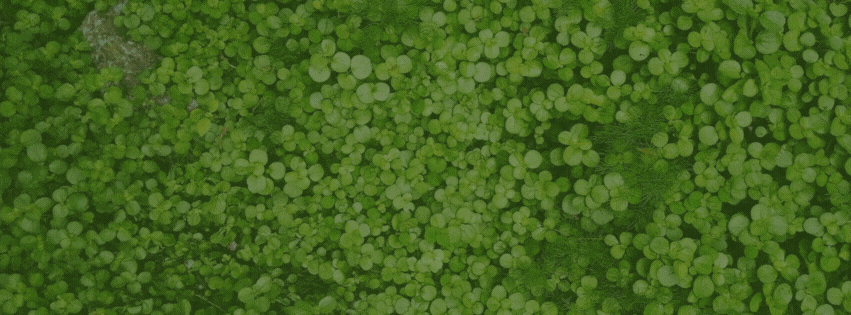
Hello, friends and nature lovers. I hope you’re having a wonderful day. Not long ago, I wrote about finding beauty in the smallest things, and today, I want to share with you the beauty and simplicity of some wild plants. Living in a tropical area, I’ve grown accustomed to the abundance of green in nature, and sometimes, I overlook the variety of plants surrounding me. Therefore, I decided to capture some of them in photographs to share with you today.

Each of these plants has grown naturally, and together, they create a beautiful spectacle of simplicity and beauty.

We start with this lovely plant that covers most of the ground in damp areas. It manages to spread and fully cover surfaces spanning several meters, demonstrating great resilience, even to the constant tread of people. Its leaves are small, soft, and rounded. I’ve tried to identify it using various apps, but I haven’t reached a conclusive result.
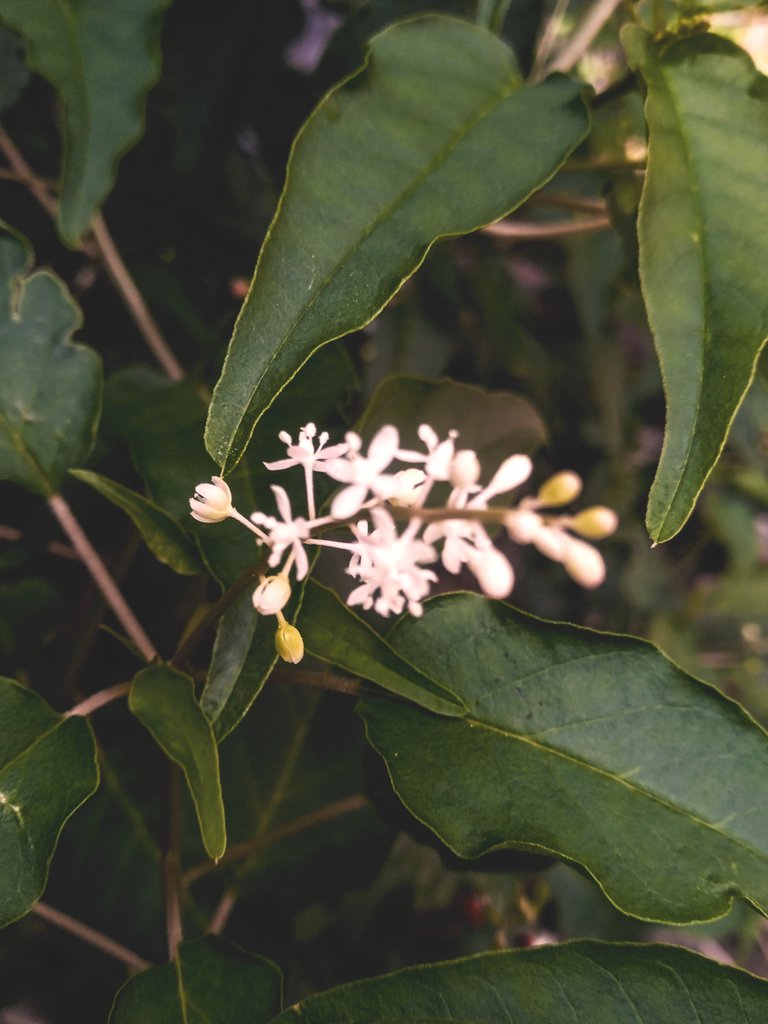 |  |
|---|
Just a few meters away grows a plant I’m quite familiar with: it is a Rivina, easily recognizable by its small, almost white, pink flowers and its red, small, rounded fruits that grow in clusters. To the touch, they burst, leaving red stains on your hands. Some medicinal benefits are attributed to this plant.
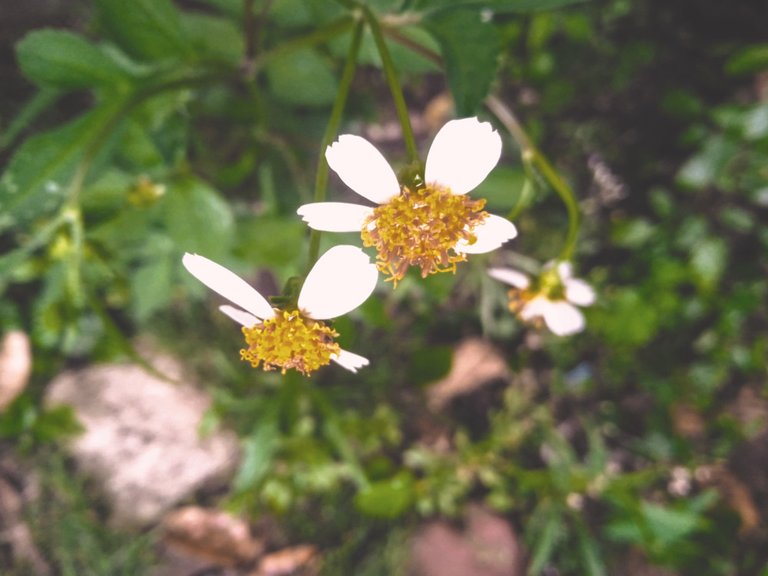
The next plant is none other than my beloved romerillo. Interestingly, I recently discovered that in some places it’s called ‘amor seco’ (dry love), a name that intrigued me. This plant is commonly used in my country’s natural medicine, especially by singers in the past to relieve vocal cord tension. They would grind the plant with hierba buena and bee honey, then infuse the mixture. Another interesting fact about this plant is that its true flowers are located in the central yellow area, responsible for reproduction.
 | 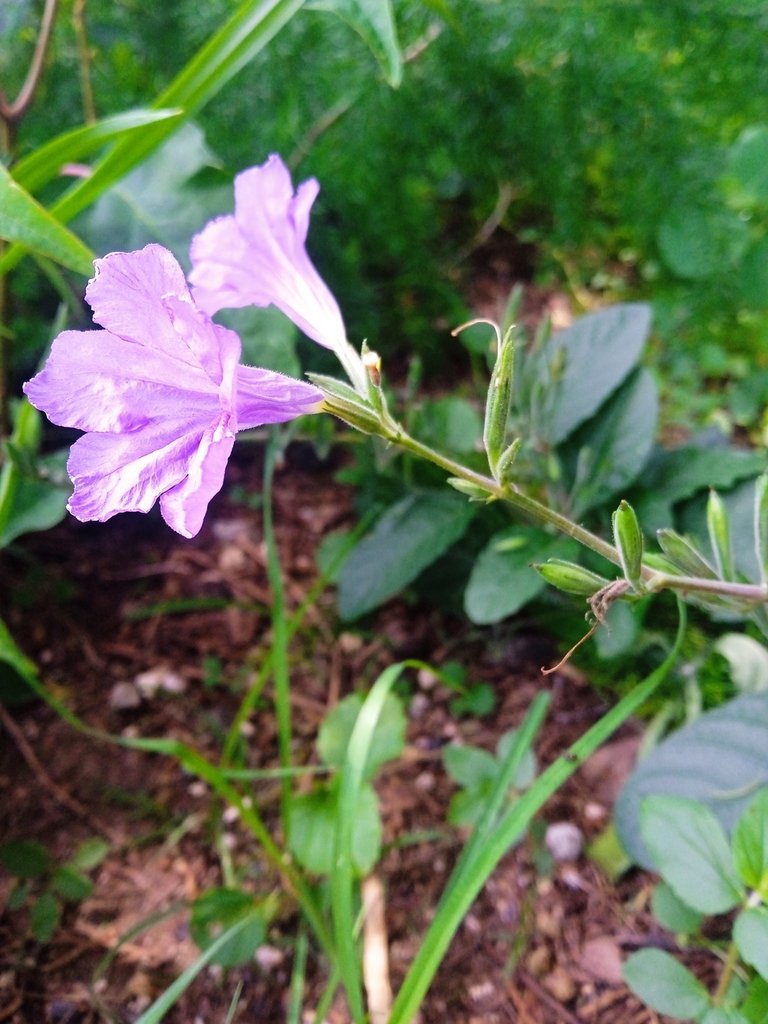 |
|---|
With its bluish, almost purple flowers, this plant is known in my country as ‘saltaperico’ or ‘saltasalta’. But if you can’t find it by this name, it’s the Ruellia Tuberosa. Along with the beauty of its bell-shaped flowers, its fruits stand out the most: brown pods that, when ripe and in contact with water, cause a small explosion that releases its seeds, leading to the plant’s rapid dispersion in the area. I spent many hours of my childhood collecting these fruits just to watch them explode.
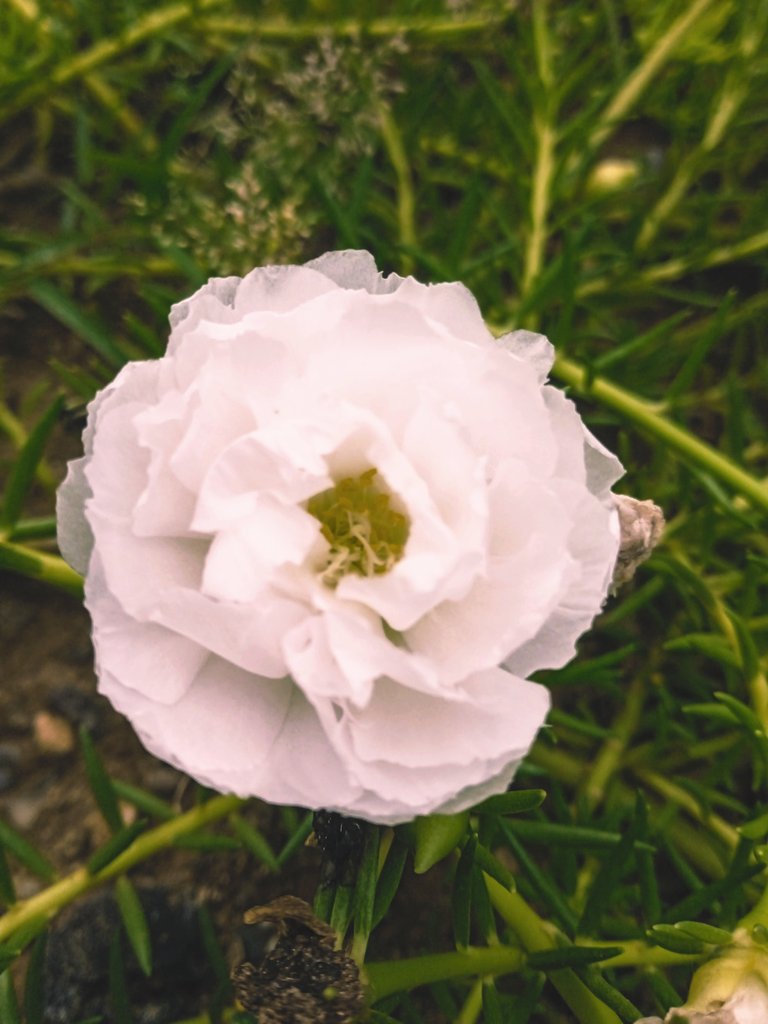
The Flor de Ceda, also known by many other names, is a must-see on this tour, standing out in various colors and shapes. Although it’s one of those plants that resist the garden and prefer the freedom of nature, it’s quite demanding when it comes to potting.
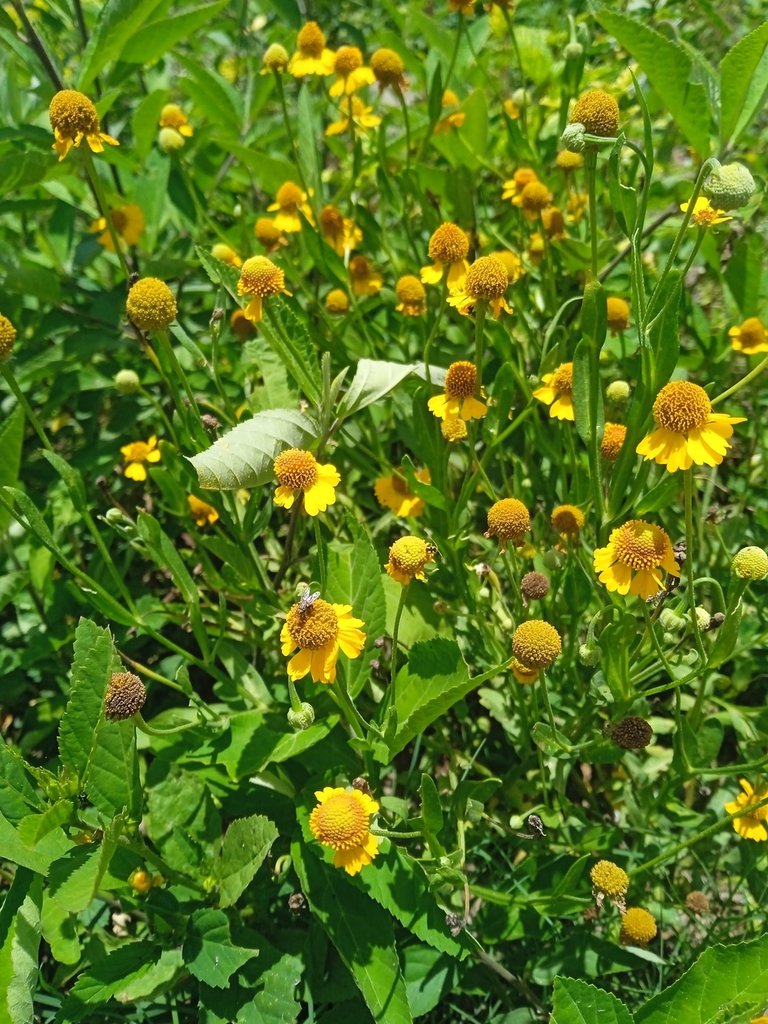
We conclude with another of my favorites, the manzanilla de campo, a misunderstood plant perhaps due to its not-so-pleasant aroma or the allergies it’s said to cause. But I can’t imagine the plains of this island without this plant and its tiny, beautiful flowers.
And, as it’s becoming a habit on my blog, today’s #doodle couldn’t be missed.

Well, friends, that’s all for today. I hope you’ve enjoyed reading and learning about these wild plants that adorn my country’s fields with me. If you’ve enjoyed reading, your support and comments mean a lot to me, as well as any questions or suggestions you might have. I’ll be more than happy to answer you. Warm regards and thank you for reading. See you in the next post.


Belleza Silvestre + Doodle 007 [ENG/ESP]
Hola, amigos y amantes de la naturaleza. Espero que estén teniendo un lindo día. Hace poco escribí sobre encontrar la belleza en las cosas pequeñas y hoy quiero compartir con ustedes la belleza y sencillez de algunas plantas silvestres. Quizás por vivir en una zona tropical, estoy algo adaptado a ver el color verde en la naturaleza y a veces paso por alto toda la variedad de plantas que me rodean. Por eso, me decidí a capturar en fotos algunas de ellas para mostrárselas hoy.

Todas estas plantas han crecido por sí solas y, en su conjunto, crean un bello espectáculo de sencillez y belleza.

Comenzamos con esta bella planta que cubre la mayoría de los suelos en las zonas húmedas. Logra extenderse y cubrir en su totalidad superficies de varios metros y es muy resistente, incluso al paso constante de las personas. Sus hojas son pequeñas, suaves y redondeadas. He intentado identificarla con algunas aplicaciones, pero no obtengo un resultado concluyente.
 |  |
|---|
A pocos metros crece una planta que conozco bien: se trata de una Rivina, fácilmente reconocible por sus pequeñas flores rosadas, casi blancas, y sus frutos rojos, pequeños y redondeados, que crecen en racimos. Al tacto, explotan y dejan manchas rojas en las manos. A esta planta se le atribuyen algunos beneficios medicinales.

La siguiente planta no es otra que mi querido romerillo. Aunque recientemente descubrí que en algunos lugares se le llama amor seco, y por alguna razón, me llamó mucho la atención tan peculiar nombre. Esta es otra planta muy común en la medicina natural de mi país, usada en épocas pasadas por los cantantes para aliviar la tensión de las cuerdas vocales, moliendo la planta junto a hierba buena y miel de abeja y después infusionando la mezcla. Otra curiosidad sobre esta planta es que sus verdaderas flores se encuentran en la zona amarilla central, siendo estas las encargadas de la reproducción.
 |  |
|---|
Con sus flores de color azulado, casi morado, esta planta en mi país se le conoce como saltaperico o saltasalta, pero por si no la encuentran por este nombre, se trata de la Ruellia Tuberosa. Junto a la belleza de sus flores acampanadas, lo que más sobresale son sus frutos: vainas de color café al madurar que, al contacto con el agua, provocan una pequeña explosión que libera sus semillas, lo que provoca una rápida dispersión de la planta en la zona. Muchas horas de mi niñez, pasé recogiendo sus frutos para verlos explotar.

La Flor de Ceda, conocida también por muchos otros nombres, no puede faltar en este recorrido, destacándose en varios colores y formas. Aunque es de esas plantas que se resisten al jardín y prefieren crecer en la libertad de la naturaleza, siendo una planta muy exigente a la hora de ser colocada en una maceta.

Y terminamos con otra de mis favoritas, la manzanilla de campo, una planta incomprendida quizás por su aroma no muy agradable o las alergias que dicen puede causar. Pero no logro imaginarme las llanuras de esta isla sin esta planta de flores tan pequeñas y bonitas.
Y, como se está haciendo costumbre en mi blog, no podía faltar el #doodle de hoy.

Bueno, amigos, esto será todo por hoy. Espero hayan disfrutado leyendo y conociendo conmigo estas plantas silvestres que adornan los campos de mi país. Si has disfrutado leyendo, tu apoyo y comentarios significan mucho para mí, así como cualquier duda o sugerencia que tengas. Estaré más que encantado de responderte. Un gran saludo y gracias por leerme. Nos vemos en la próxima.

Translated with DeepL.com (free version)
I apologize if there are any grammatical errors, English is not my native language, I have tried to be as careful as possible.
I regularly create images on Pixabay, which are free of copyright. Access my gallery by clicking here.
All assets, illustrations and banners have been created by me and are original content, unless otherwise specified.
Photos taken by me using my Redmi 9A phone and native camera app, edited in the Lightroom app.
Cover created in Canva.
Thank you very much to you and Ecency, have a nice day.
From Venezuela, our witness drives decentralization and the adoption of Web3 technology, creating opportunities for the local community and contributing to the global ecosystem. // Desde Venezuela, nuestro testigo impulsa la descentralización y la adopción de la tecnología Web3, generando oportunidades para la comunidad local y contribuyendo al ecosistema global.
Sigue, contacta y se parte del testigo en: // Follow, contact and be part of the witness in: